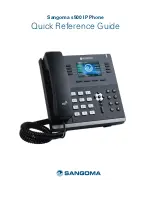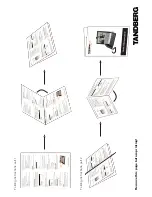
65
64
●
Do not touch the antenna unnecessarily when the phone is in
use. Contact with the antenna affects call quality and may
cause the phone to operate at a higher power level than
otherwise needed.
For Vehicles Equipped with an Air Bag
An air bag inflates with great force. DO NOT place objects,
including both installed or portable wireless equipment, in the area
over the air bag or in the air bag deployment area. If in-vehicle
wireless equipment is improperly installed and the air bag inflates,
serious injury could result.
Batteries
Caution : All batteries can cause property damage, injury or burns if
a conductive material, such as jewelry, keys or beaded chains,
touches exposed terminals. The material may complete an
electrical circuit and become quite hot. To protect against such
unwanted current drain, exercise care in handling any charged
battery, particularly when placing it inside your pocket, purse or
other container with metal objects. When the battery is detached
from the phone, your batteries are packed with a protective battery
cover, please use this cover for storing your batteries when not in
use.
Check the laws and regulations on the use of wireless telephones
in the areas where you drive. Always obey them.
Also, if using your phone while driving, please:
▶
Give full attention to driving-driving safely is your first
responsibility;
▶
Use hands-free operation, if available;
▶
Pull off the road and park before making or answer a call if
driving conditions so require.
Most modem electronic equipment is shielded from RF signals.
However, certain electronic equipment may not be shielded against
the RF signals from your wireless phone.
Pacemakers
The Health Industry Manufacturers Association recommends that a
minimum separation of six(6”) inches be maintained between a
handheld wireless phone and a pacemaker to avoid potential
interference with the pacemaker. These recommendations are
consistent with the independent research by and recommendations
of Wireless Technology Research.
Safety Information
Exposure to Radio Frequency Signal
Your wireless handheld portable telephone is a low power radio
transmitter and receiver. When it is ON, it receives and also sends
out radio frequency(RF) signals.
European and international agencies have set standards and
recommendations for the protection of public exposure to RF
electromagnetic energy.
▶
Internation Commission on Non-Ionizing Radiation Protection
(ICNIRP) 1996
▶
Verband Deutscher Elektrotechnik(VDE) DIN-0848
Directives of the European Community, Directorate General V in
Matters of Radio Frequency Electromagnetic Energy
▶
National Radiological Protection Board of the United Kingdom,
GS 11, 1988
▶
American National Standards Institute(ANSI) IEEE C95.1-1992
▶
National Council on Radiation Protection and Measurements
(NGRP), Report 86
▶
Department of Heath and Welfare Canada, Safety Code 6
These standards are based on extensive scientific review. For
example, over 120 scientists, engineers, and physicians from
universities, government health agencies, and industry reviewed the
available body of research to develop the ANSI Standard.
The design of your phone complies with these standards when used
normally. Use only the supplied or an approved replacement
antenna. Unauthorized antennas, modifications, or attachments
could damage the phone and may violate FCC regulations.
Efficient Phone Operation
Normal Position
Hold the phone as you would any other telephone with the antenna
pointed up and over your shoulder.
Tips on Efficient Operation:
For your phone to operate most efficiently;
●
Extend your antenna fully
Chapter 9. Safety Guidelines
Summary of Contents for DM150
Page 1: ...User Guide P N MMBB0032301 1 0 DATE 2002 01 15 ...
Page 41: ...Memo Memo ...
Page 42: ...Memo Memo ...
Page 43: ...Memo ...





































